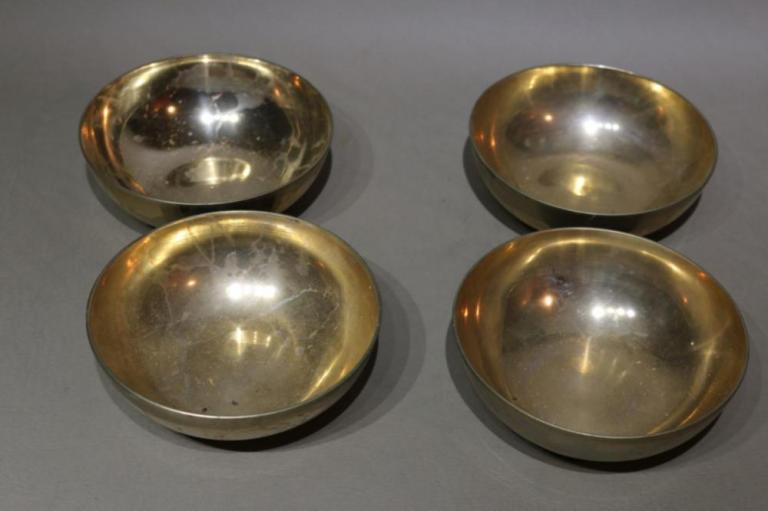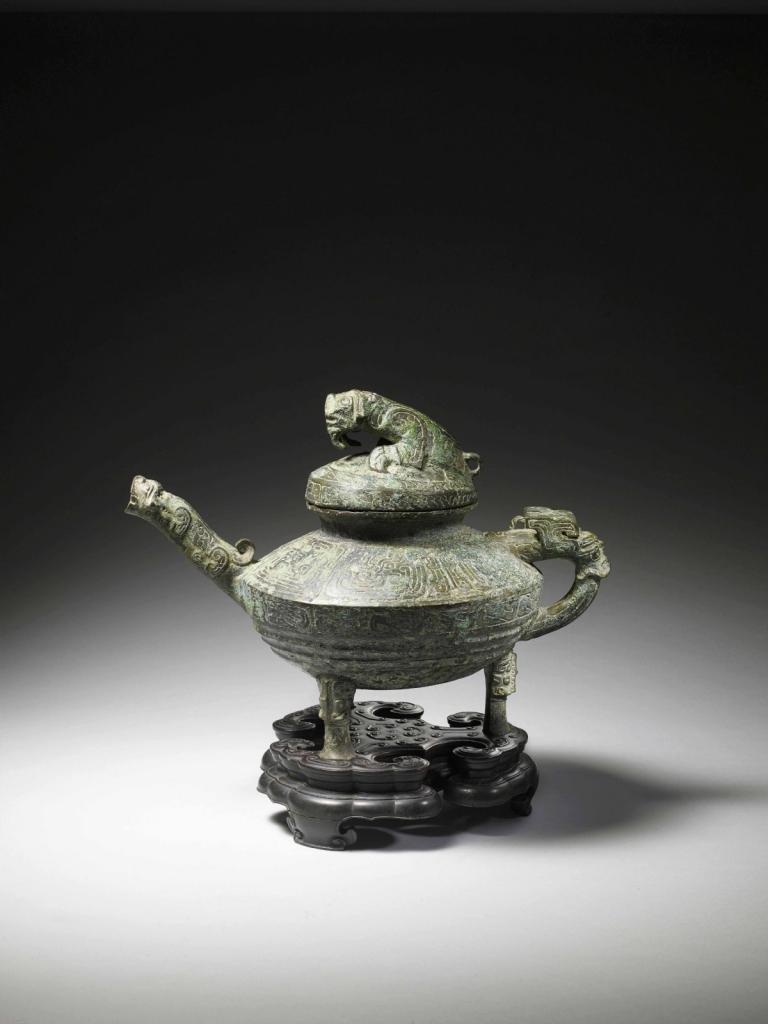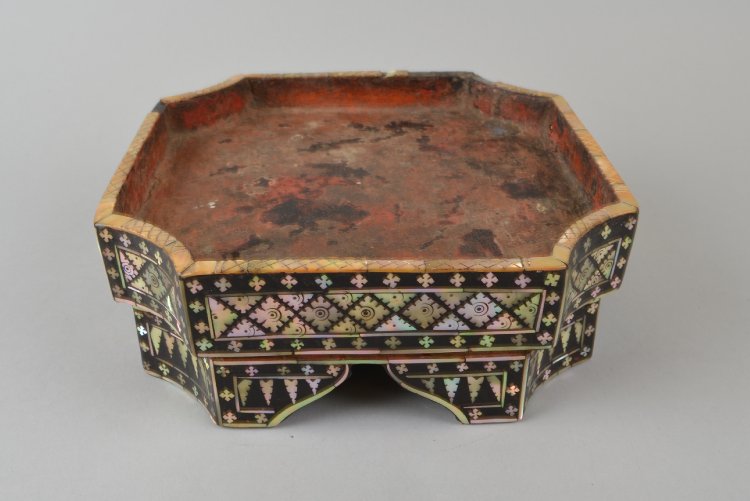Bronze Ware Research in the 20th Century
5 min readIn the 20th century, historians and archeologists carried out comprehensive, deep, and multi-field research on bronze ware based on scientific excavations and sufficient digging of information of bronze ware all over the country, and made remarkable academic results.

Between 1928 and 1937, the archeological group of the History and Language Research Institute of the Central Research Institute conducted 15 archeological excavations on Yinxu(Yin Ruins), capital of the late Shang Dynasty, and found the tomb of the Shang Dynasty, palace site and a great deal of carapace bone scriptsand bronze ware. The excavations laid a solid foundation for the research of history, culture, and bronze ware of the Shang Dynasty. Archeological excavation on Yinxu was never interrupted. Fuhao tomb, discovered in 1976, is the tomb of a noble in the Shang imperial court. This tomb had not been discovered by anybody. The 468 bronze articles unearthed in the tomb provided precious documents for studying bronze ware types, patterns, item combinations and casting techniques during the late Shang Dynasty.
After important bronze articles in Yinxu and other places were discovered, archeological excavation reports and related theses were published. The publications are helpful for today’s bronze ware research.
The Palace Museum, the National Palace Museum in Taipei, and Shanghai Museum collect a large number of ancient bronze articles. Museums in Shaanxi, Sichuan, Hunan, Hubei, Henan, Hebei, Gansu, Shanxi, Shenyang, Zhejiang, Tianjin, Yunnan, and Guangxi all have special bronze ware exhibitions. Moreover, bronze ware museums have been established in Guanghan, Guangzhou, Zhouyuan and other important excavation places.
Influential bronze ware research achievements in the first half of the 20th century consist of: Textual Research on Bronze Ware Inscriptions of the Zhou Dynasty, written by Guo Moruo, which was published in 1932 and republished in 1958. The book recorded 137 bronze articles with specific production periods in the Western Zhou Dynasty, and 114 articles of different kingdoms in the Eastern Zhou Dynasty. The author learned from archeological methods, and carried out chronology research on bronze ware of the Western Zhou Dynasty and regional research on bronze ware of different kingdoms in the Eastern Zhou Dynasty. The research approach was innovative. The Exploration of the Models of Yi Bronze Ware was the opening theme of bronze ware art research.

General Research on Bronze Ware of the Shang and Zhou Dynasties, written by Rong Geng and published by Harvard-Yenching Institute in 1941, is a book that comprehensively studies Chinese bronze ware.
The book has two volumes. The first volume introduces 15 bronze ware specialties, including origin, discoveries, types, epochs, inscriptions, patterns, casting processing, identification, collections, catalogues and others. The second volume collects the pictures of more than 1,000 bronze objects. Due to the limited compilation condition at that time, the identification of some items is yet to be determined. The writer cooperated with Zhang Weichi later, revised mistakes, and shortened the book to the General Theory of Bronze Ware in the Yin and Zhou Dynasties.
Many bronze ware research reports were published in the late period of the 20th century. Representative works include Bronze Ware Patterns and Decorations of the Shang and Zhou Dynasty and Selected Bronze Ware Inscriptions of the Shang and Zhou Dynasties compiled by the bronze ware research group of Shanghai Museum.
Bronze Treasures of China(16 volumes), written and edited by Li Xueqin and Ma Chengyuan, was published in 1998. The book selects 3,000 typical bronze objects from thousands of bronze items in 190 relic institutions, focusing on representative items unearthed in the second half of the 20th century, important handed down articles and items collected in countries outside of China. The book is categorized in terms of dynasty and region. It is the most systematic collection of Chinese ancient bronze ware so far.
Spring and Autumn Period.Zengbo Qihu Kettle Shape.Inscription Rubbing Bronze Ware Unearthed in Zhouyuan(10 volumes),published in 2005,organizes and studies bronze articles of the Western Zhou Dynasty and the time prior to the Zhou Dynasty in the Zhouyuan area,includingFufeng and Qishan in Shaanxi.This book’s compilation structure and academic standard is higher than Bronze Treasures of China.
It is possible for researchers of the 20th century to obtain sufficient cultural information and directly inspect bronze articles in person,and so the understanding of bronze ware during the period is unprecedented.For example,ancient people failed to identify the purpose of a kind of vessel,so they named the vessel Guo or Yi.Modern scholar Wang Guowei and other scholars made careful studies and textual research,and drew the conclusion that the vessel is actually called Gui,which was used with Ding to contain food in ancient times.
Later archeological discovery verified the deduction.Research results of historical and cultural connotations and the chronology of bronze ware inscriptions provide solid evidence for the Xia Shang Zhou Chronology Project.
Archeological discovery and research results of the 20th century also comprise of Chinese bronze ware origin research;identification of bronze ware of the Xia Dynasty,discovery and research of sacrificial pits of the ancient Shu people in Sanxingdui,Guanghan,Sichuan;discovery and research of imperial heavy bronze ware unearthed in a bronze ware hoard in Shangcheng,Zhengzhou;discovery and research of bronze ware clusters with obvious southern terrain characteristics,such as the Dayangzhou Tomb in Xingan,Jiangxi and bronze ware clusters unearthed in Jiangxi,Hunan and Hubei;continuous discovery and research of bronze ware clusters in Zhouyuan;the rules of using the Ding in the Western Zhou Dynasty and bronze ware chronology;research of multiculturalism in the Western Zhou Dynasty and bronze ware of kingdoms,especially the bronze ware of the Chu Kingdom after the Warring States Period,the Zenghouyi tomb unearthed in Suixian County,Hubei,and the bronze ware cluster of the king’s tomb of Zhongshan Kingdom in Pingshan,Hebei;research ofthe bronze ware cluster of the ancient Dian people and grassland nomads;and special research of ancient bronze mirrors.
Many overseas scholars are engaged in and make contributions to Chinese bronze ware research.
Bronze ware research involves archeology,history,philology,ethnology,science and technology history,art history,and other fields.Rich relics and constant discoveries of bronze articles provide information in connection to cultural connotations, terrain features, article category names, chronology, and casting techniques.









